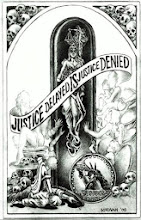 Chief Justice Dead of Cancer
Chief Justice Dead of Cancer
William H. Rehnquist had served as the
Chief Justice of the United States since 1986.
William Hubbs Rehnquist (born
October 1,
1924, Died September 3, 2005) was an
American jurist. He was a former
law clerk and Assistant Attorney General and had served as the 16th
Chief Justice of the United States since he was elevated from associate justice by
President Ronald Reagan in
1986.
Early life
Rehnquist was born in
Milwaukee,
Wisconsin. After finishing high school, he attended
Kenyon College and entered the
U.S. Army Air Force. Rehnquist served in
World War II from
1943 to
1946, working as a weather observer in
North Africa.
After the war ended, Rehnquist attended
Stanford University with assistance under the provisions of the
G.I. Bill. In
1948, Rehnquist received a
bachelor's degree and a
master's degree in
political science. In
1950, Rehnquist went to
Harvard University, where he received a master's degree in government. He returned later to
law school at
Stanford University, where he graduated first in his class (ahead of
Sandra Day O'Connor, who came in third).
Rehnquist went to
Washington, DC to work as a
clerk for
Justice Robert H. Jackson during the Court's
1951–
1952 terms. There, he wrote a
memorandum arguing against school
desegregation while the court was considering the
Brown v. Board of Education case. Rehnquist later claimed that the memo was meant to reflect Jackson's views and not his own.
Rehnquist later moved to
Phoenix,
Arizona, where he was in private practice from
1953 to
1969. During these years, he was also active in the
Republican Party, and served as a
legal advisor to
Barry Goldwater's 1964 presidential campaign. During the 1986 Senate hearings on his nomination to serve as Chief Justice of the
United States, several people came forward to complain about what they had perceived as Rehnquist's attempts to discourage minority voters in Arizona elections when Rehnquist served as a "poll watcher" in the early 1960s, though the allegations did not describe illegal behavior. Rehnquist denied the charges completely and was confirmed by a wide margin, although by less than
Antonin Scalia, who was nominated to fill Rehnquist's seat as an associate justice of the Supreme Court.
Justice Department and Supreme Court serviceWhen
President Richard Nixon was elected in
1968, Rehnquist returned to work in Washington. He served as
Assistant Attorney General of the
Office of Legal Counsel, from
1969 to
1971. In this role, he served as the chief
lawyer to Attorney General
John Mitchell. President Nixon mistakenly referred to him as "Renchburg" in several of the tapes of
Oval Office conversations revealed during the
Watergate investigations. Nixon nominated Rehnquist to replace
John Marshall Harlan II on the Supreme Court upon Harlan's retirement, and after being confirmed by the
Senate by a 68-26 vote on
December 10,
1971, Rehnquist took his seat as an Associate Justice on
January 7,
1972. There were two vacancies on the court at the time; Nixon nominated
Lewis Franklin Powell, Jr. to fill the other.
On the
Burger Court, Rehnquist promptly established himself as the most conservative of Nixon's appointees, taking a narrow view of the
Fourteenth Amendment and a broad view of state power. He voted against the expansion of school
desegregation plans and the establishment of abortion rights (dissenting in the
1973 case
Roe v. Wade), and in favor of
school prayer,
capital punishment, and
states' rights.
When Chief Justice
Warren Burger retired in 1986, then-President
Ronald Reagan nominated Rehnquist to fill the position. Despite controversy, he was confirmed by the
Senate and assumed the office on
September 26.
Since becoming Chief Justice, Rehnquist has continued to lead the Court's move towards taking a broader view of state powers in the U.S. federal system. For example, he wrote for a 5 to 4 majority in
United States v. Lopez, striking down a federal law as exceeding Congressional power under the
commerce clause. Rehnquist had also led the way in establishing more governmental leniency towards state aid for religion, writing for another 5 to 4 majority in Zelman v. Simmons-Harris (2002) approving a school voucher program that aided parochial schools.
Rehnquist also created a unique robe for himself as Chief Justice in 1994. It has four golden bars on each sleeve. In the past, Chief Justices had not dressed differently than any of the Associate Justices. Rehnquist's robe was modeled after a robe he had seen in a production of
Gilbert and Sullivan's
operetta Iolanthe, first staged in
London in
1882. The costume which inspired Chief Justice Rehnquist, an acknowledged Gilbert and Sullivan fan, is worn by the
Lord Chancellor, a character called upon to settle a dispute among a colony of fairies.
Family life
Rehnquist married Natalie Cornell in 1953. She died on
October 17,
1991 after suffering from
ovarian cancer. They had three children: James, Janet, and Nancy. His daughter Janet is a former
Inspector General of the
Department of Health and Human Services.
Rehnquist often spent summers in
Vermont.
Rehnquist, who was the first justice of
Scandinavian descent, had a
Norwegian lineage.
Health problems
On
October 26,
2004, the Supreme Court announced that Rehnquist had recently been
diagnosed with
thyroid cancer, and that he had been hospitalized at Bethesda Naval Medical Center for the past five days. In a brief statement, the Court said that Rehnquist underwent a
tracheotomy two days prior. This led to renewed speculation in the media over Rehnquist's health and his possible retirement and replacement. Rehnquist has long struggled with back problems, and developed a dependence on the prescription sedative
Placidyl to ease his back pain, for which he underwent a drug addiction treatment program at the
George Washington University Hospital in the early 1980s. William Hubbs Rehnquist died of thyroid cancer on September 3, 2005, with his family surrounding him.














